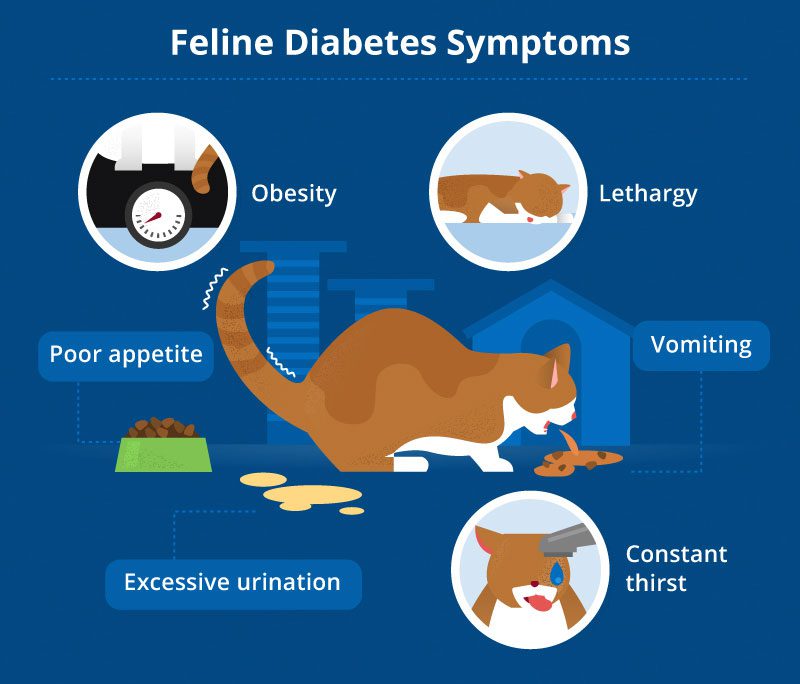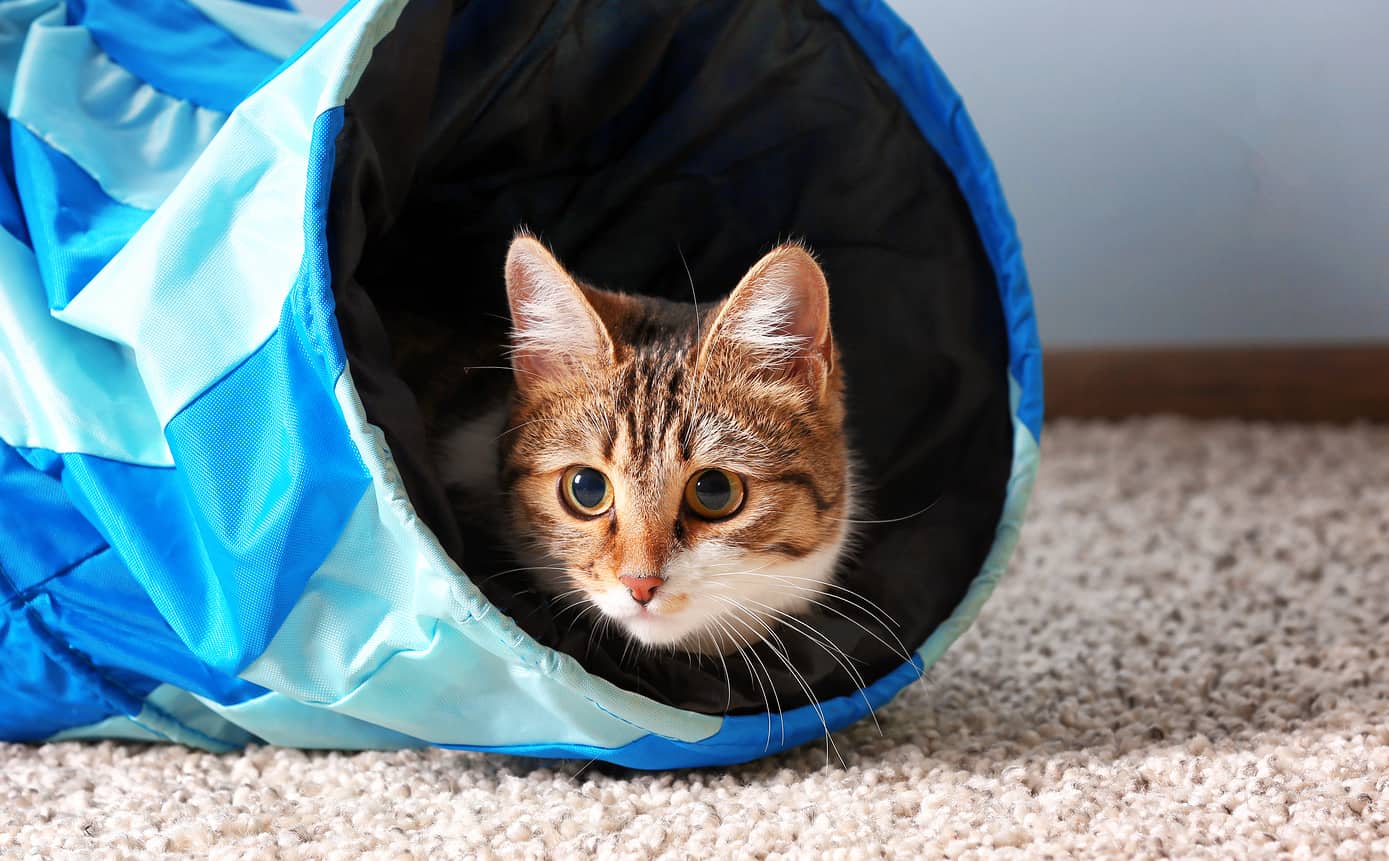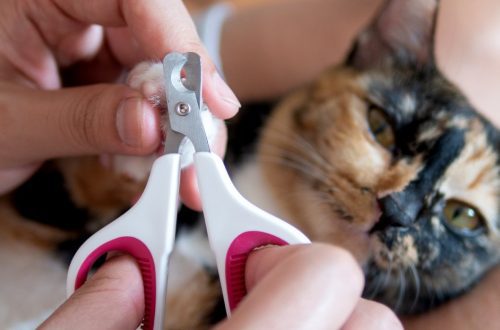
צוקערקרענק אין קאַץ: סימפּטאָמס און באַהאַנדלונג
Can cats have diabetes? Unfortunately, this happens. Diabetes mellitus in cats is much like diabetes in humans: it comes in two types, can be identified by a characteristic set of signs, and often requires careful monitoring. Although some cases of diabetes are difficult to prevent, it is possible to reduce the risk of developing the disease. Proper nutrition and physical activity will help with this.
ינהאַלט
Why do cats get diabetes?
Diabetes in cats occurs when blood sugar levels rise as a result of a deficiency of insulin, a hormone produced by the pancreas. This organ is located in the middle part of the cat’s abdomen under the stomach. Insulin regulates blood sugar by transporting it from the bloodstream to the cells that need it. It is important to maintain the right blood sugar levels, because this level determines the amount of glucose – the main source of energy that the cells of the cat’s body receive.
Some pathological conditions, such as pancreatitis, or genetic factors negatively affect the functioning of the pancreas. This can lead to lower insulin levels, causing type 1 diabetes. Type 2 diabetes is more common in cats. In this case, even if the cat’s body produces enough insulin, its cells do not respond to this hormone. As a result, the cat’s blood sugar levels rise.

Like humans, obese animals are at a higher risk of developing insulin resistance and developing diabetes. Cats receiving long-term steroid injections or oral steroids are also at an increased risk of developing type 2 diabetes. The fact is that steroids disrupt the function of insulin production.
Type 1 diabetes is an incurable chronic disease. This type of diabetes in cats will require treatment for life. Type 2 diabetes is in many cases reversible with weight loss. Many cats go into remission when they reach normal weight. This means that the body begins to respond to insulin again and treatment can be stopped.
Signs of Diabetes in Cats
The classic signs of diabetes in cats are:
- increased thirst and increased fluid intake;
- אָפט ורינאַטיאָן;
- געוואקסן אַפּעטיט;
- אָנווער פון גוף וואָג;
- אַביסאַטי.
Unlike dogs, cats are not prone to diabetic cataracts or eye problems. Owners may not notice that their cat has lost weight if she is obese or overweight, but increased thirst and urination are sure to be noticeable. Nausea is also a sign of how diabetes mellitus manifests itself in cats. Lethargy, loss of appetite, fatigue are a few more symptoms of diabetes in cats.
Other signs that owners might look out for include an odd gait or an unusual stance on their hind legs. Elevated blood sugar levels can affect the nerve endings in the hind legs, sometimes causing them to weaken. Any of these symptoms or oddities in your cat’s behavior is a reason to make an appointment with a specialist as soon as possible.
How to treat diabetes in cats
The good news is that once diagnosed, diabetes in cats is treatable. It usually includes a special diet for diabetic cats and weight control. If your cat is large, your veterinarian may prescribe a medicated weight loss diet to help shed those extra pounds back to normal levels.
Regardless of the type of diabetes a pet is diagnosed with, most cats also require insulin injections once or twice a day to lower their blood sugar levels.
Don’t panic – giving cats insulin injections is usually very easy: they hardly notice the injections. The size of the needle is so small that it is sometimes difficult to determine whether the cat received insulin in the end or not. To facilitate the process, in some cases it is recommended to shave a small area of wool between the shoulder blades so that the skin is visible. Since most cats enjoy compliance, it is advisable to combine the injections with a play or cuddle schedule to reward your pet for “suffering” immediately after the injection.
When a cat is diagnosed with diabetes mellitus, most veterinary clinics schedule a special meeting with owners to teach them everything they need to know about insulin injections. Veterinarians will provide all the necessary support in the process of learning how to care for a furry friend.
Diabetes Cat Diet and Prevention
Diet plays a huge role in diabetic cats. But not less – and in the prevention of the disease. Simply put, most animals develop type 2 diabetes because they are overweight. Overweight and obese cats are at a much higher risk of developing this disease.
To protect your cat from developing type 2 diabetes, the right amount of calories from a balanced diet will help. Most domestic cats overeat out of boredom. If your pet is consuming more than 250 calories per day, this is probably too much. In this case, the animal is at risk of getting chronic diseases. Talk to your veterinarian about your pet’s normal weight and how many calories they need daily.
It is important to remember that the cat’s metabolism is controlled by muscles, so it is necessary to keep them in good shape through games and exercises. The more a cat runs and jumps, the higher its chances for a long, healthy and happy life next to you.





